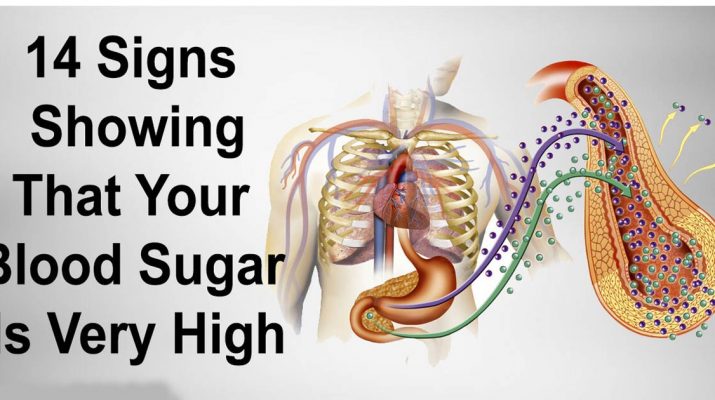Increased blood sugar levels do not necessarily indicate diabetes, as they are just one of the many symptoms of the disease. Yet, this is a serious warning that you need to address the issue as soon as possible, in order to prevent additional complications.
These are the most common symptoms of high blood sugar levels:
1. Increased appetite and weight gain
2. Stomach fat
3. Constant thirst
4. Frequent need to urinate
5. Stomach discomfort
6. Dry and itchy skin
7. A blurry vision
8. Constant tiredness
9. Slow healing of wounds and cuts
10. Recurring infections
11. Constantly dry mouth
12. Impotence
13. Nerve problems
14. Inability to concentrate
If you experience these symptoms, before you turn to commercial medications and prescribed therapy, you should try to lower blood sugar levels in a natural way. Studies have shown that you can lower sugar levels in the blood and lower the risk of type 2 diabetes by following a low-GI diet.
GI or glycemic index is a scale that classifies foods according to their effects on the sugar levels in the blood. It varies from 0 to 100, so you need to increase the intake of foods that are lower on it.
Foods with a high GI include:
- Flour
- Sugar
- Soda
- Bread
- Bananas, cherries, grapes, and watermelon
- Raisins
- Breakfast cereals, such as corn flakes and rice
- Cookies and crackers
- Rice
- White potatoes
You can occasionally consume foods with moderate GI, like:
- Brown rice
- Figs
- Baked potatoes
- Cornmeal
- Pineapples
- Beetroot
- Mango
- Taco shells
The lowest ranked foods on the scale have a GI between 0 to 54, and you should focus on them:
- Vegetables, such as leafy greens, cauliflower, and asparagus
- Steel-cut oatmeal
- Sesame seeds, flax seeds, and peanuts
- Legumes, lentils, and chickpeas
- Reduced-fat yogurt
- Quinoa
- Farrow
- Sweet potatoes
- Skim milk
- Ezekiel bread
However, note that, according to Diabetes UK, the GI can also be affected by other factors such as:
- “Cooking methods: frying, boiling, and baking
- Processing and the ripeness of fruit and certain vegetables
- Fibre: whole grains and high-fiber foods act as a physical barrier that slows down the absorption of carbohydrate. This is not the same as ‘wholemeal’, where, even though the whole of the grain is included, it has been ground up instead of left whole. For example, some mixed grain breads that include whole grains have a lower GI than wholemeal or white bread.
- Fat lowers the GI of a food. For example, chocolate has a medium GI because of its fat content, and crisps will actually have a lower GI than potatoes cooked without fat.
- Protein lowers the GI of food. Milk and other dairy products have a low GI because they are high in protein and contain fat.”
Moreover, make sure you also start exercising regularly, as it is also one of the best ways to naturally lower blood sugar levels.

